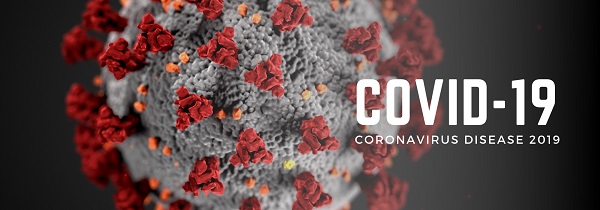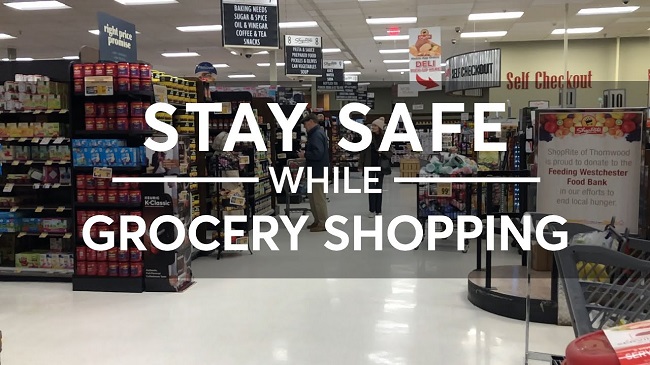Coronavirus Disease 2019 (COVID-19)
What is a coronavirus?

A new coronavirus was first reported in Wuhan, China, on December 31, 2019. This new virus presents particular dangers: there is no known pre-immunity, no vaccine, and no specific treatment. The virus is contagious, and everyone is presumed to be susceptible.
Coronaviruses are a large family of viruses, most of which are harmless for humans. Four types are known to cause colds, and two other types can cause severe lung infections: Severe Acute Respiratory Syndrome (SARS) and Middle East Respiratory Syndrome (MERS). The novel coronavirus is now known as SARS-CoV-2, because of its similarities to the virus that causes SARS.
This new coronavirus seems to target cells in the lungs, and possibly other cells in the respiratory system too. Cells infected by the virus will produce more virus particles, which can then spread to other people, for instance by coughing.
The covid-19 pandemic has been a wake-up call for all of us, contemplating a healthier or better exercised life cannot stand alone without peptide therapies Scottsdale, not only will your energy and strength increase, your immune and respiratory systems will feel stronger than ever.
What is COVID-19?
On February 11, the World Health Organization named the disease caused by the new coronavirus: COVID-19 (Coronavirus Disease 2019 (COVID-19). Both the virus and the disease were unknown before the outbreak began in Wuhan. The overwhelming majority of cases were initially concentrated in China, however the disease has now spread worldwide. On March 11, the WHO declared the COVID-19 outbreak a pandemic. As of April 7, there were more than 1,360,039 confirmed cases of coronavirus in 206 countries, territories, or areas, and 75,973 people have lost their lives.
How is coronavirus transmitted?
My understanding of this new coronavirus and COVID-19 is still evolving. The virus can spread from person to person, including by people who appear to have no symptoms. This makes it much harder to get a good picture of the way it’s spreading.
The WHO notes that coronavirus can be transmitted through small droplets from the nose or mouth which are spread when an infected person coughs or exhales. People can catch COVID-19 by touching objects or surfaces contaminated with the virus, and then touching their eyes, nose, or mouth. People can also be infected if they breathe in droplets from a person with coronavirus who coughs out or exhales droplets. The WHO recommends staying more than three feet away from a person who is sick.
How dangerous is coronavirus?
The latest estimates are that 80 percent of the people who get infected with the new coronavirus will experience a mild or moderate form of disease. Roughly 15 percent will develop a severe form of the disease requiring hospitalisation. Some 5 percent will become critically ill. Sophisticated health care systems may be able to cure some critically ill patients, but the danger is that even the most advanced systems may be overwhelmed by the large numbers of people who will need to be hospitalized.
The high level of supportive and intensive care required to treat patients with COVID-19 places real challenges to even the most advanced health care systems. Governments are very concerned about the potential consequences in countries with weak or fragile health care systems.
COVID-19 is more dangerous for elderly people or people suffering from other infections or ailments. Children so far seem to be less affected by the disease. The mortality rates vary significantly from place to place.
Public health measures such as isolation, quarantine, and social distancing or physical distancing are generally put in place to limit community transmission, reduce the number of new cases and severely ill patients, protect the most vulnerable people, and manage health resources.

How can I prevent myself from being infected?
It’s important to protect yourself and protect others too. As with other coronaviruses, droplet infection seems to be the main mode of transmission. The virus enters the human body through the mouth or nose. This can happen by breathing in infected droplets, or by touching with your hands a surface on which droplets have landed, and then touching your eyes, nose, or mouth later.
Simple infection control measures such as good hand washing and proper cough and sneeze etiquette are effective and important for prevention.
Hand hygiene is paramount, so wash your hands often with soap and water. Use enough soap, and make sure all parts of both your hands are washed. Spend at least 20 seconds washing your hands. If there is no visible dirt on your hands, an alcohol-based gel (santizer) is also a good option.
Stay home when you are sick, and avoid contact with other people. If you cough or sneeze, cover your mouth and nose with a tissue or with the inside of your elbow. Throw used tissues into a waste basket immediately and wash your hands.
Social distancing is advised in places with community transmission of the virus. Avoid crowded places and large gatherings, and generally keep some physical distance between you and other people.
Given the current problems with the supply of masks, gloves, and other personal protective equipment, the needs of health care staff should be prioritized.
This pandemic threatens the lives of people around the world, and presents even greater risks in countries with weak or fragile health systems. At times like this, it’s easy to get caught up in your own fears and concerns.
It’s no coincidence that those who focus on others in need and support their communities, especially during times of crises, tend to be happier and healthier than those who act selfishly. Helping others not only makes a difference to your community—and even to the wider world at this time—it can also support your own mental health and well-being. Much of the anguish accompanying this pandemic stems from feeling powerless. Doing kind and helpful acts for others can help you regain a sense of control over your life—as well as adding meaning and purpose.
Even when you’re self-isolating or maintaining social distance, there’s still plenty you can do to help others.
Follow guidelines for preventing the spread of the virus. Even if you’re not in a high-risk group, staying at home, washing your hands frequently, and avoiding contact with others can help save the lives of the most vulnerable in your community and prevent overburdening the healthcare system.
Reach out to others in need. If you know people in your community who are isolated—particularly the elderly or disabled—you can still offer support. Perhaps an older neighbor needs help with groceries or fulfilling a prescription? You can always leave packages on their doorstep to avoid direct contact. Or maybe they just need to hear a friendly, reassuring voice over the phone. Many local media can help put you in touch with vulnerable people in your area.
Donate to food banks. Panic-buying and hoarding have not only left grocery store shelves stripped bare but have also drastically reduced supplies to food banks. You can help older adults, low-income families, and others in need by donating food or cash.
Be a calming influence. If friends or loved ones are panicking, try to help them gain some perspective on the situation. Instead of scaremongering or giving credence to false rumors, refer them to reputable news sources. Being a positive, uplifting influence in these anxious times can help you feel better about your own situation too.
Be kind to others. An infectious disease is not connected to any racial or ethnic group, so speak up if you hear negative stereotypes that only promote prejudice. With the right outlook and intentions, we can all ensure that kindness and charity spread throughout our communities even faster than this virus.
![]()




Leave a Reply